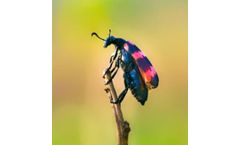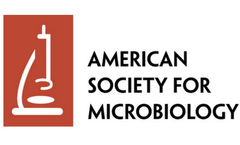Pheromone Solid Phase Synthesis A Revolutionary Advancement In The Synthesis Of Pheromones Articles & Analysis: Older
20 articles found
In the realm of insect pest management, the utilization of pheromones has proven to be a game-changer. One such pheromone that has garnered significant attention in recent years is Japonilure. Japonilure has shown great promise in effectively attracting insects and aiding in agricultural pest management. In this article, we delve into the effectiveness of Japonilure in attracting insects, its ...
Gel materials have become a popular choice for delivering pheromones in various applications due to their unique properties. Pheromones are chemical signals that are naturally produced by animals and insects to communicate with each other. Pheromone delivery systems have a wide range of applications, including pest control, crop protection, and animal behavior control. Introduction of Gel ...
Introduction of Pheromone Release Technology Pheromone release technology refers to the use of chemicals known as pheromones for communication purposes in various industries. Pheromones are chemical substances that are secreted by an organism and are capable of triggering a response in another organism of the same species. They are often used as a means of signaling in the animal kingdom and have ...
What is oleyl alcohol? Oleyl alcohol (CAS 143-28-2) is a fatty alcohol with a chemical formula of C18H36O. It is a colorless liquid that is soluble in both water and most organic solvents. Oleyl alcohol is also known as cis-9-octadecen-1-ol or 9-octadecenol. It is derived from fatty acids and is commonly found in natural sources such as fish oils, vegetable oils, and animal fats. Oleyl alcohol ...
Introduction of Pheromone Solid-phase Synthesis Pheromones are a fascinating class of molecules that are used by many organisms, including insects and mammals, to communicate with one another. They are chemical signals that convey information about an individual's identity, reproductive status, and location, among other things. The synthesis of pheromones is a complex process that requires a deep ...
Pheromones are chemicals produced by animals, including humans that have the ability to influence the physiology or behavior of other individuals of the same species. They are widely used in many areas, such as agriculture, pest management, and reproduction strategy. The identification and characterization of pheromones can be a challenging task, requiring a combination of analytical and ...
Introduction to Insecticides Insecticides are a class of chemicals mainly used to control agricultural pests and urban sanitation pests. The use of insecticides has a long history, a large amount and a variety of varieties, which have played an extremely important role in increasing agricultural production. 1. Classification of Insecticides 1.1 Source According to the source classification, ...
Insect pheromones are compounds used to express various information such as aggregation, foraging, mating, and vigilance. Insect pheromones exist in insects in nature, and all insects produce and recognize pheromones. Insect pheromones have been widely used in pest management internationally in recent years as they are green and environmentally friendly, making fruit and vegetable safer. What are ...
Recent reports show that 2020 degree day accumulations are shaping up to be similar to that of 2015. “Traps have been going up early this year because it has been so warm. Heat unit accumulations since January 1 this year are similar to what we recorded in 2015, which was the earliest navel orangeworm biofix in many decades at the Nickels Soil Lab.” Franz Niederholzer, UC Farm ...
U.S. regulatory oversight of synthetic biology across the board needs to be modernized to reflect and address the promising technologies routinely entering the market. From a statutory perspective, the pertinent laws appear sufficiently broad to empower federal agencies to address potential risks and promote the potential benefits of synthetic biology. The regulatory infrastructure, however, is ...
Ecologist Katherine Ingram is on a quest to quantify the economic value of insect-eating bats in walnut groves. For the past three years, Katherine Ingram has had a most unusual summer job: catching bats and studying their droppings to see what they eat. A doctoral student in ecology at the University of California, Davis, Ingram is exploring the role bats can play as winged soldiers in the ...
ByEnsia
Vancouver, BC, November 24, 2014 – Semios, provider of real-time agricultural information and precision pest management tools, has been given US EPA approval for three aerosol pheromone products that disrupt the mating of codling moth and oriental fruit moth. “Our new formula performs extremely well at lower temperatures, emitting a drier mist that disperses quickly across an ...
This paper presents INTACO, a hybrid Ant Colony Optimisation (ACO) algorithm coupled with a local search applied to the joint production and preventive maintenance scheduling problem in the flowshop sequencing problem. INTACO uses pheromone trail information to perform modifications on complete joint production and preventive maintenance solutions unlike more traditional ant systems that use ...
Cells slow down cell cycle progression in order to adapt to unfavorable stress conditions. Yeast (Saccharomyces cerevisiae) responds to osmotic stress by triggering G1 and G2 checkpoint delays that are dependent on the mitogen-activated protein kinase (MAPK) Hog1. The high-osmolarity glycerol (HOG) pathway is also activated by arsenite, and the hog1 mutant is highly sensitive to arsenite, partly ...
Cells slow down cell cycle progression in order to adapt to unfavorable stress conditions. Yeast (Saccharomyces cerevisiae) responds to osmotic stress by triggering G1 and G2 checkpoint delays that are dependent on the mitogen-activated protein kinase (MAPK) Hog1. The high-osmolarity glycerol (HOG) pathway is also activated by arsenite, and the hog1 mutant is highly sensitive to arsenite, partly ...
Using a servosphere (locomotion compensator), locomotory behavior of Colorado potato beetle Leptinotarsa decemlineata Say (Coleoptera: Chrysomelidae) larvae was measured in detail in response to pulsed and non-pulsed odors of hostplant and conspecific pheromone. Second instars showed decreased straightness of movement, and all larvae showed decreased speed, in response to potato odor. Change in ...
Ascertaining the relative effects of factors such as weather and predation on population dynamics, and determining the time scales on which they operate, is important to our understanding of basic ecology and pest management. In this study, we sampled the pine engraver Ips pini (Say) (Coleoptera: Scolytidae) and its predominant predators Thanasimus dubius (F.) (Coleoptera: Cleridae) and Platysoma ...
Cocoon-spinning larvae of the codling moth, Cydia pomonella L. (Lepidoptera: Olethreutidae) employ a pheromone that attracts or arrests conspecifics seeking pupation sites. Such intraspecific communication signals are important cues for illicit receivers such as parasitoids to exploit. We tested the hypothesis that the prepupal C. pomonella parasitoid Mastrus ridibundus Gravenhorst (Hymenoptera: ...
Social insect colonies are not the harmonious entities they were once considered. Considerable conflicts exist between colony members, as has been shown for Hymenoptera. For termites, similar studies are lacking, but aggressive manipulations have been claimed to regulate sexual development, and even to account for the evolution of workers. This study on a basal termite, Cryptotermes secundus ...
Ustilago maydis, a pathogen of maize, is a useful model for the analysis of mating, pathogenicity, and the morphological transition between budding and filamentous growth in fungi. As in other fungi, these processes are regulated by conserved signaling mechanisms, including the cyclic AMP (cAMP)/protein kinase A (PKA) pathway and at least one mitogen-activated protein kinase (MAP kinase) pathway. ...









